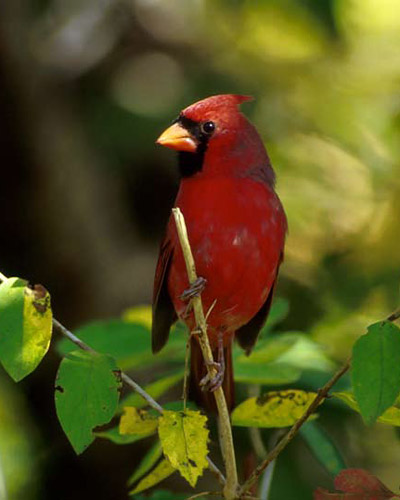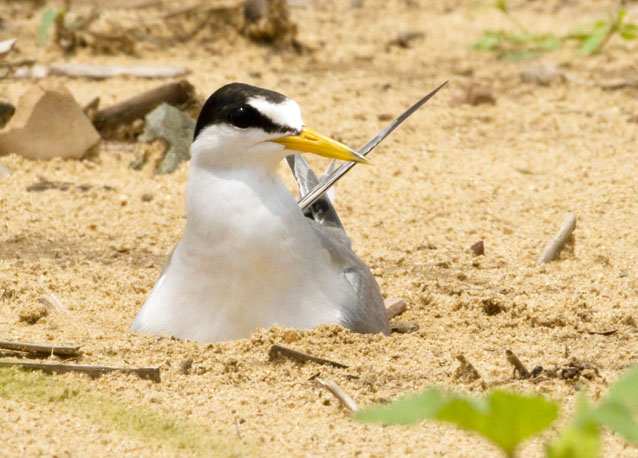Methods

USFWS
The State University of New York College of Environmental Science and Forestry and the University of Akron conducted a bird inventory of Washita Battlefield National Historic Site (NHS) in Oklahoma. Surveys were conducted in eight habitat types found within the park boundaries during five distinct survey periods (16-21 February 2001, 21-26 May 2001, 15-20 January 2002, 29 May – 3 June 2002, 26 November – 1 December 2002). Thirty sampling points were established throughout the park. The sampling points were at least 250 m apart and were stratified by habitat in order to document avian use of specific habitats within the park. Each point was counted twice during each survey session: once in the morning and once in the evening. Morning and evening counts were conducted within 3 hours of sunrise or sundown, respectively. Habitat variables were also recorded including vegetation height and canopy cover.
Status
A total of 65 avian species were detected during the surveys. The highest species richness (25 species) was observed in river riparian habitat. Richness at the other habitat types was as follows: restored wheat field (19 species), south riparian (17 species), north bench (17 species), north flood plain (16 species), plowed field (13 species), sandy prairie (10 species), and upland range (9 species).
During spring/summer, 27 species were recorded on point counts. Of these, 72.3% of all individual observations were of just five species: dickcissel (Spiza americana; 26.8%), mourning dove (Zenaida macroura; 18.3%), meadowlarks (Sturnella species; 11.4%), Northern cardinal (Cardinalis cardinalis; 10.9%), and Carolina chickadee (Poecile carolinensis; 4.9%). The dickcissel was also the most widely dispersed of all species, occurring at 22 of the 30 point count stations.
During fall/winter, 22 species were recorded on point counts. Seven species accounted for 70.2% of all individual observations: American goldfinch (Spinus tristis; 17.9%), song sparrow (Melospiza melodia; 16.5%), white-crowned sparrow (Zonotrichia leucophyrs; 8.7%), Northern cardinal (8.0%), mourning dove (7.6%), Harris’s sparrow (Zonotrichia querula; 6.3%), and Carolina chickadee (5.2%). The most widely dispersed fall bird was the field sparrow (Spizella pusilla), occurring at 14 point count stations (46.7%), albeit in low numbers (5.1% of individual observations).
A 1999 bird list for Washita Battlefield NHS (K. Foote, pers. comm.) listed interior least tern (Sterna antillarum athalassos) as occurring “within the historic site or in the surrounding Black Kettle National Grassland.” Least terns were not observed in the point counts or incidentally. Appropriate nesting habitat (broad, flat, sandy banks and bars) does not seem to occur along the Washita River within park boundaries. Therefore, it is likely that the least tern on the original bird list was observed within the surrounding landscape and not at Washita Battlefield NHS. In fact, nesting for this species was confirmed from 1997-2001 north of the park at the border of Roger Mills and Ellis Counties. Additionally, the U.S. Fish and Wildlife Service lists whooping crane (Grus americana), bald eagle (Haliaeetus leucocephalus), and lesser prairie chicken (Tympanuchus pallidicinctus) as occurring in Roger Mills County. None of these species were recorded during our surveys.

USFWS
Contacts
Mark V. Lomolino, SUNY College of Environmental Science and Forestry, Department of Environmental and Forest Biology, Syracuse, NY
Gregory A. Smith, University of Akron, Department of Biology, Akron, OH
References
Lomolino, M. V., and G. A. Smith. 2001. Baseline invenbaseline avian inventory at Washita Battlefield National Historic Site, Oklahoma Final report submitted to the National Park Service, Washita Battlefield National Historic Site, Cheyenne, OK.
U.S. Fish and Wildlife Service. 1997. Section 7 consultation with National Park Service on Endangered Species Act. Letter dated December 11, 1997.
Prepared by the Southern Plains Network Inventory and Monitoring Program, 2015.
Part of a series of articles titled Southern Plains Bird Inventories.
Last updated: February 1, 2017
